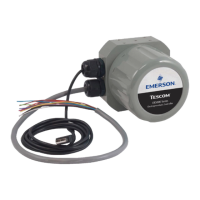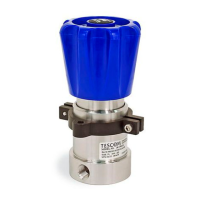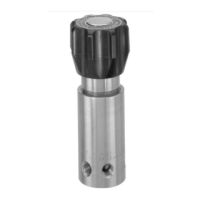ER5000 —
32
How It Works
direction. Signicantly, Integral retains its value after the error
has been corrected. This is known as Integral Windup.
• The
Derivative
(D) term is a function of the current rate of
change. The D value decreases, then begins to dampen the other
values, as the controller brings the system closer to setpoint.
PID Controllers: Three Components Are Better Than One
Why three independent values? Consider this scenario:
• You are behind the wheel of a car that needs to turn through a
curve in the road.
• As the car enters the turn, you simply steer to match the
curve. At this point, you are a Proportional controller.
• As the car continues through the turn, however, peripheral
force pushes it outward. Matching the curve (Proportional
only) is no longer sufcient. You now nd it necessary to
oversteer (add Integral) to stay in the curve. Then a gust of
wind hits the side of the car; now you need to oversteer more
to compensate for both the wind and the peripheral force
(accumulated Integral).
• As the car passes the midpoint of the curve, the peripheral
force decreases and the wind dies down. Now the oversteer
(Proportional and accumulated Integral) threatens to put
the car into a skid. You respond by understeering (adding
Derivative) through the rest of the curve until you are back on
straight road.
• As you drive on, you remember the wind that hit at the most
inopportune moment, so you keep a close hand on the wheel
in case there is another gust (Integral windup).
Like the driver who knows when to follow the road, when to
oversteer and when to understeer, controllers that can combine
the effects of Proportional, Integral and Derivative have the
exibility to respond effectively to the widest range of application
requirements and environmental conditions.
Now consider the same curve with three different drivers.
• The rst driver spots a police car in the next lane. This driver’s
primary goal will be to stay squarely within the lane through
the whole length of the turn. This controller carefully balances
Proportional, Integral and Derivative.

